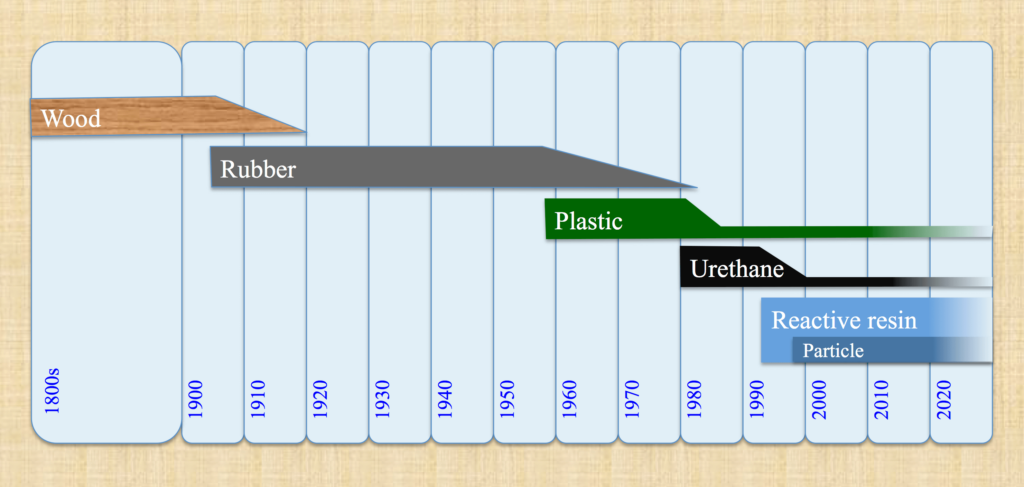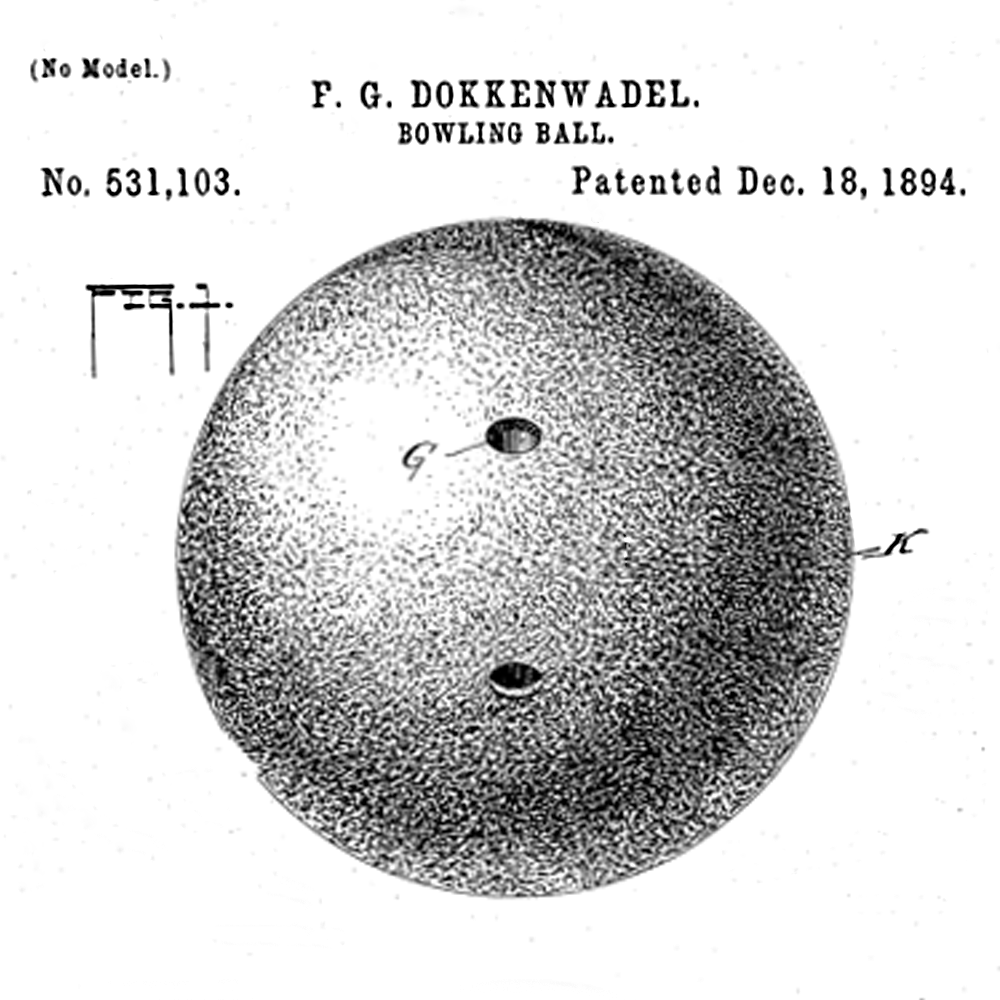
When someone picks up a bowling ball for the first time, they usually don't think about what's inside it. The ball itself is relatively heavy, meaning that it's probably solid all the way through.
But is it really? Chances are you’ll be surprised when you find out what makes up a bowling ball's interior. And that’s what we’ll explore in this article.
Contents
What Is Inside a Bowling Ball
Though you might think that bowling balls are solid on the interior, there are actually many components that make up the ball as a whole. Competitive bowling balls usually have the following components:
Filler
The filler is the central part of a bowling ball’s core. It is made of microbubbles and a dense material that allows a manufacturer to alter the ball weights without affecting its dimensions.
The shape of the core differs from bowling ball to bowling ball. It affects how the ball responds to the force of the throw and the degree to which it hooks as it approaches the pins.
Weight Block

Many modern competitive balls also have a weight block that acts as a counterweight to the throw. Depending on its construction, it can speed the ball up, slow it down, or make it turn inwards (hook). These weight blocks are placed at strategic positions to impact the turn and curve of the ball as it moves down the lane.
Bowling ball manufacturers know their business and have put a lot of research and development into crafting the perfect bowling ball. Still, a ball that works for one bowler may not work well for another. So, you’ll find many bowling ball configurations for sale today, each targeting a specific bowling style and strategy.
What’s Inside a Cheap Bowling Ball?

Beginner balls usually have a symmetrical central core to limit sideways deviation when a player bowls. Getting these balls to hook usually requires considerable effort and a deep understanding of the physics of a throw.
Advanced bowling balls typically have an asymmetrical core, which makes them hook towards the center when nearing the end of a lane. Professionals who bowl with these balls don't have to spend so much time figuring out how to get the ball to hook.
Consequently, advanced balls can spend more time on the throw itself. This is not the case with a cheaper bowling ball.
The interior core material also varies. Denser materials affect how the balls move from the outside of a lane towards the inside, allowing for more hooking. Each interior core material may appeal to different bowling styles and strategies.
To determine how a ball’s core will affect its movements, scientists at bowling ball manufacturing companies spend considerable time inspecting and cataloging the pattern the balls make on the oil at the start of a lane.
Are Bowling Balls Created Equally?
Bowling balls are most definitely not created equally. As any professional bowler will tell you, the interior of a bowling ball can make a lot of difference in how the ball operates after it’s thrown.
Some bowling professionals stick to a particular bowling ball brand because they find that it gives them a better hook or more control. Bowling balls also have different finger hold depths, making some more comfortable for bowlers to grip and throw.
How Older Bowling Balls Compare to Newer Ones

Before 1905, bowling balls were made exclusively out of wood from Caribbean and South American trees. In 1905, the first rubber-covered ball was crafted, which changed the sport forever, giving bowling professionals a ball with better hooking potential. The rubber balls design persisted until the 1970s, when polyester was introduced as a coverstock material.

Older balls used to be simple and solid, with a core that didn’t deviate from the spherical ball shape. Drilling holes in strategic locations adjusted balance and weight. These balance holes helped to keep the ball moving in the direction the bowler wanted it to.
But eventually, the central single-core bowling ball was phased out as manufacturers realized how important an irregular-shaped core is to a ball’s function and handling. The core design became the focal point of bowling ball customization for modern day bowling balls.
Since 1993, bowling ball manufacturers have turned to computer-aided design to help them mock up and simulate cores for the best bowling experience for consumers. The core change could affect everything from the ball's weight to its handling and hooking capabilities on the lanes.
Constant innovation to the modern bowling ball has made it so that bowling balls don’t remain on the market for more than 2 years at a time.

Are Expensive Balls Made Differently?
Professional bowling balls can be significantly more expensive, partially because their internal core and weight dynamics are optimized based on modern research and development. The chemicals used for creating these individual cores may also factor into the ball’s cost.
If you're bowling professionally or with a team, you'll probably want to invest in your own bowling ball. And in most cases, you get what you pay for when it comes to bowling balls.
We aren’t telling you to go out and buy the most expensive ball you can find. But, we advise against going with the cheapest one. Chances are it will be very difficult to control, much like the balls you rent at a bowling alley.
These cheaper balls are totally fine for casual play. But if you want to really rack up the points, you may be better off going for a higher priced ball.
How a Bowling Ball’s Construction Affects Gameplay
Bowling is all about physics. Naturally, a bowling ball's physical construction significantly impacts its performance on bowling lanes. The lanes are covered with oil to decrease friction at the start of the throw. As the ball gets closer to the bowling
pins, the oil is reduced, giving the ball time to grip the lane. The outer covering of the ball helps with this process, allowing the ball to slow down and potentially hook inward to the pins.
Inner cores are by far the most important part of the ball. Cores can be either symmetrical or asymmetrical, and the shape affects both the ball’s weight and its handling on the lane.
A heavier ball has much more force, so it can produce substantial power as it hits the pins. Lighter balls are easier to place and direct but deliver less energy to the bowling pin during impact.
The shape of the core affects how the ball skews as it travels down the lane. Symmetrical cores make for very predictable bowling and are the best option for beginners since they don't have to worry about wobbling or erratic movements.
However, asymmetrical cores are perfect for advanced bowlers since it gives them a ball they can hook left or right, depending on their bowling strategy.
Related Articles
- Oil Patterns for Bowling Lanes
- What Bowling Ball Weight Should I Use
- How to Throw a Hook Bowling Ball
The Inside of a Bowling Ball Matters
A bowling ball is much more complicated than you may initially think, especially when you consider how simple it looks on the exterior. They have a very calculated construction that considers a ton of weight and motion related factors that most bowlers don’t even think about.
Still, the interior construction of a bowling ball is a critical part of its functioning, and knowing about it can give you an edge when choosing a bowling ball for yourself.
We hope that this article has been helpful to you, having introduced you to the interior of both cheap and competitive bowling balls. If you ever consider purchasing your own ball, we encourage you to always consider what’s inside.
Kira Byrd, a Certified Fraud Examiner, holds a B.S. in Accounting from the University of Alabama at Birmingham. With a passion for bowling from her childhood, Kira has poured her expertise and personal experiences into creating and nurturing Bowling For Beginners. Kira's mission is to meet new bowlers where they are and guide them toward consistently achieving higher scores. With a focus on skill development and strategic techniques, she empowers readers to take control of their game and unlock their true potential.
Bowling For Beginners embodies strict editorial integrity, ensuring reliable and unbiased information. Kira's commitment to delivering valuable insights and practical strategies is reflected in every article. Here's an explanation of our editorial policy and how we get money.





